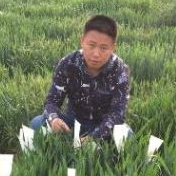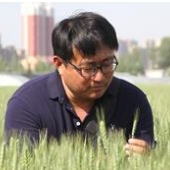Genetic and Genomic Studies of Important Traits in Cereal Crops
A special issue of Agronomy (ISSN 2073-4395). This special issue belongs to the section "Crop Breeding and Genetics".
Deadline for manuscript submissions: closed (31 December 2023) | Viewed by 11247
Special Issue Editors
Interests: wheat breeding; genetics and genomics; gene/QTL mapping; marker-/genomic-assisted selection; genomic prediction; association analyses
Interests: identification and characterization of disease resistance genes in wheat; mapping, cloning, and functional analysis of R genes; multi-omics approaches to understanding the molecular bases of disease resistance; molecular-marker-assisted breeding for enhancing disease resistance
Special Issues, Collections and Topics in MDPI journals
Interests: wheat molecular breeding; quantitative genetics; yield-related gene cloning; wheat genomics; genetic improvement of yield in wheat
Interests: wheat breeding; wheat and barley genetics and genomics; gene/QTL mapping; wheat wild hybridization
Special Issues, Collections and Topics in MDPI journals
Special Issue Information
Dear Colleagues,
The production and end-use quality of cereal food crops require further improvement in order to meet the demands of the growing population worldwide. The technological advancements in genetics and genomics and related data analyses have led to great improvements in the last decade. Single-nucleotide polymorphisms (SNPs) from various platforms including DNA genotyping-by-sequencing, skimseq, whole-genome sequencing, pan genomes, RNA sequencing, exome capture, and their related data analyses have advanced our knowledge in their applications in practical breeding. The goal of this Special Issue is to summarize some of the progress in genomic-assisted breeding for germplasm and cultivar development. We are soliciting papers describing advances in knowledge and progress in the application of these techniques, and how they can be used to improve crop production, resistance, and end-use quality through increasing the resilience of germplasm and cultivars.
Prof. Dr. Shuyu Liu
Dr. Shisheng Chen
Prof. Dr. Fa Cui
Prof. Dr. Cheng Liu
Guest Editors
Manuscript Submission Information
Manuscripts should be submitted online at www.mdpi.com by registering and logging in to this website. Once you are registered, click here to go to the submission form. Manuscripts can be submitted until the deadline. All submissions that pass pre-check are peer-reviewed. Accepted papers will be published continuously in the journal (as soon as accepted) and will be listed together on the special issue website. Research articles, review articles as well as short communications are invited. For planned papers, a title and short abstract (about 250 words) can be sent to the Editorial Office for assessment.
Submitted manuscripts should not have been published previously, nor be under consideration for publication elsewhere (except conference proceedings papers). All manuscripts are thoroughly refereed through a single-blind peer-review process. A guide for authors and other relevant information for submission of manuscripts is available on the Instructions for Authors page. Agronomy is an international peer-reviewed open access semimonthly journal published by MDPI.
Please visit the Instructions for Authors page before submitting a manuscript. The Article Processing Charge (APC) for publication in this open access journal is 2600 CHF (Swiss Francs). Submitted papers should be well formatted and use good English. Authors may use MDPI's English editing service prior to publication or during author revisions.
Keywords
- cereal crop
- resilience
- yield
- QTL mapping
- map-based cloning
- genomic-assisted breeding
- DNA sequencing
- exome capture
- genomic prediction
Benefits of Publishing in a Special Issue
- Ease of navigation: Grouping papers by topic helps scholars navigate broad scope journals more efficiently.
- Greater discoverability: Special Issues support the reach and impact of scientific research. Articles in Special Issues are more discoverable and cited more frequently.
- Expansion of research network: Special Issues facilitate connections among authors, fostering scientific collaborations.
- External promotion: Articles in Special Issues are often promoted through the journal's social media, increasing their visibility.
- Reprint: MDPI Books provides the opportunity to republish successful Special Issues in book format, both online and in print.
Further information on MDPI's Special Issue policies can be found here.








